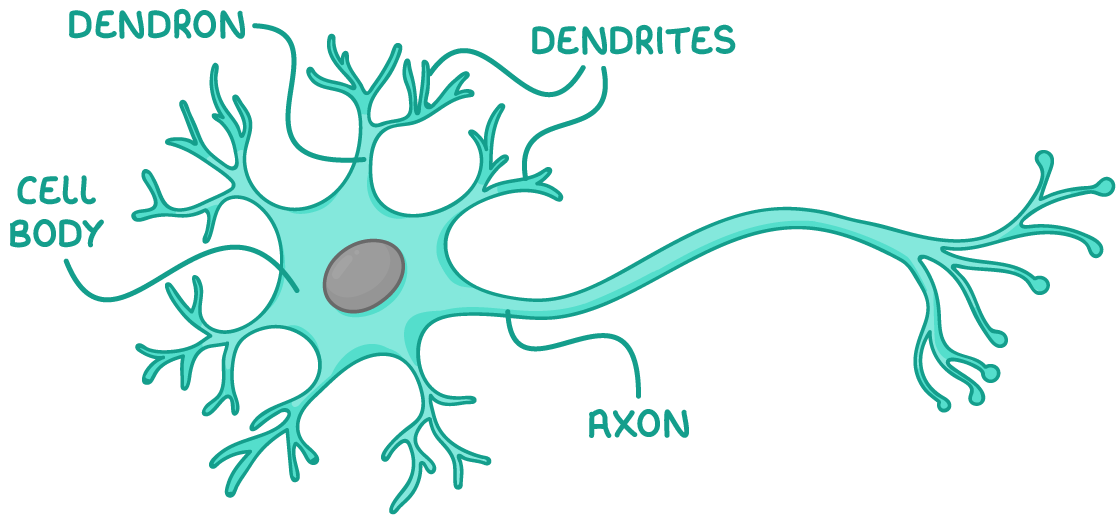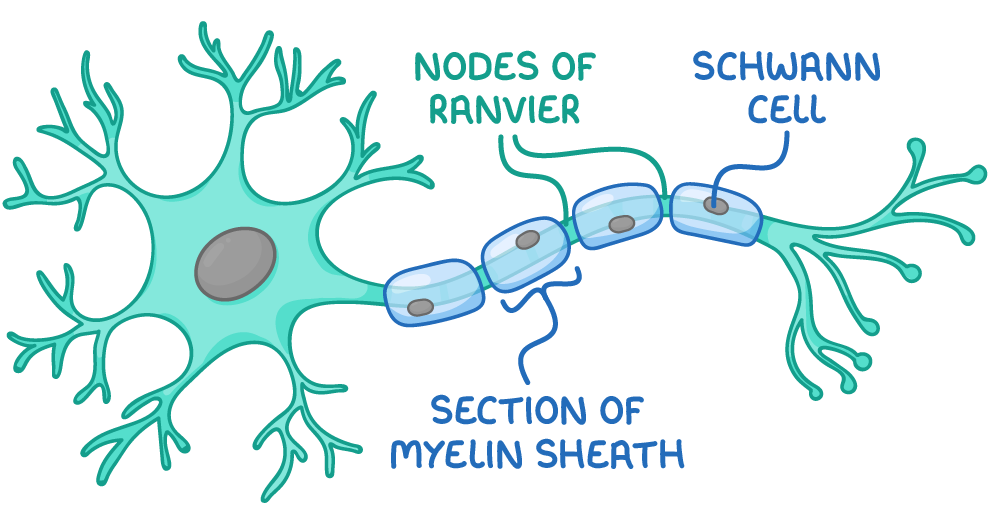Neurones
This lesson covers:
- The structure and function of neurones
- Myelinated neurones
- Sensory, relay, and motor neurones
The structure and function of neurones
Neurones are specialised nerve cells vital for transmitting electrical impulses quickly throughout the body. This rapid transmission enables organisms to react to environmental changes.
Different types of neurone work together to carry information from sensory receptors to effectors, which produce a response.

The key structural components of mammalian neurones include:
- Cell body - This part contains the nucleus and cytoplasmic organelles, such as mitochondria and the endoplasmic reticulum, which are crucial in the production of neurotransmitters.
- Dendrons - These are short branches extending from the cell body, further dividing into highly branched dendrites to receive nerve impulses from many other neurones and transmit them towards the cell body.
- Axon - A singular, long nerve fibre responsible for carrying impulses away from the cell body to other neurones or effectors.
Myelinated neurones
Some neurones are surrounded by the membranes of cells called Schwann cells.
Schwann cells have several functions:
- Their membranes form the myelin sheath.
- They remove debris via phagocytosis.
- They aid regeneration.
The myelin sheath surrounds parts of the axon, acting as an insulator that prevents the passage of ions into or out of the axon at the regions it covers.

Myelinated axons conduct impulses rapidly through a process known as 'saltatory conduction'. This means that the electrical impulse ‘jumps’ between gaps in the myelin sheath called the nodes of Ranvier, increasing transmission speed.
By contrast, non-myelinated axons transmit impulses at a slower, continuous pace.
Types of neurones
Neurones are categorised into three functional types, each with unique structural adaptations.
| Type of neurone | Function | Structure |
|---|---|---|
| Sensory neurone | Carries impulses from sensory receptors to the central nervous system | One axon and one dendron, with the dendron leading into several smaller dendrites |
| Relay neurone (intermediate neurone) | Carries impulses within the central nervous system, between other neurones | Numerous short axons and dendrons |
| Motor neurone | Carries impulses from the central nervous system to effectors | One long axon and multiple dendrites |
The typical pathway of an impulse is:
Receptor → sensory neurone → relay neurone → motor neurone → effector.